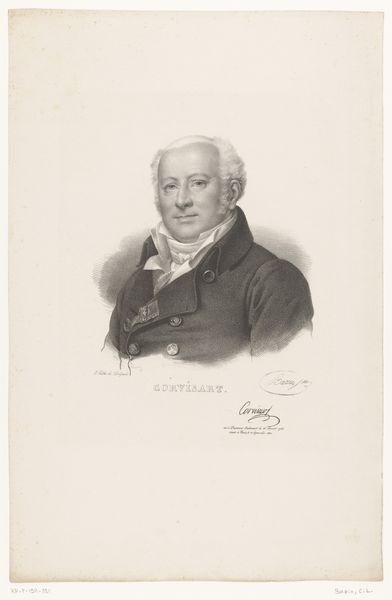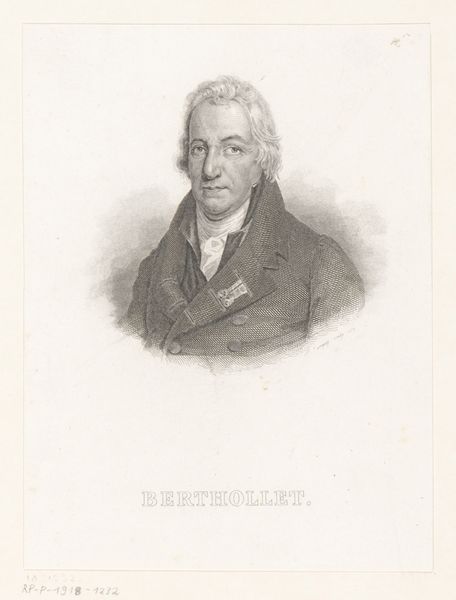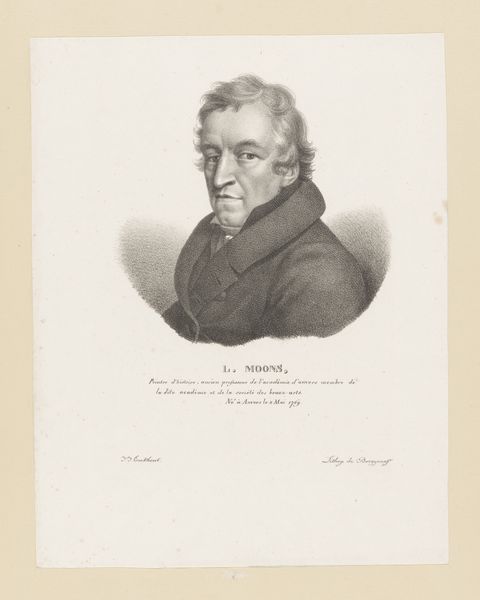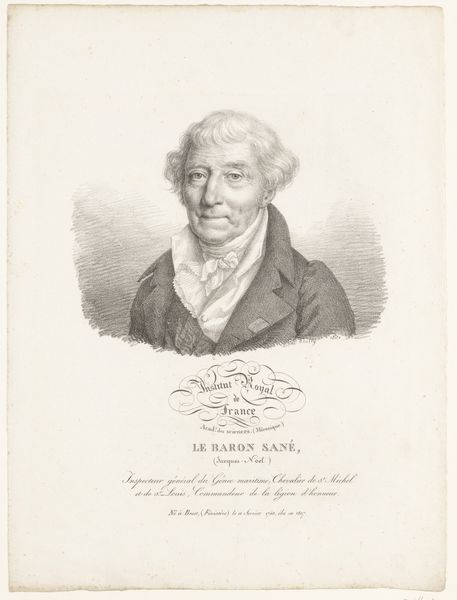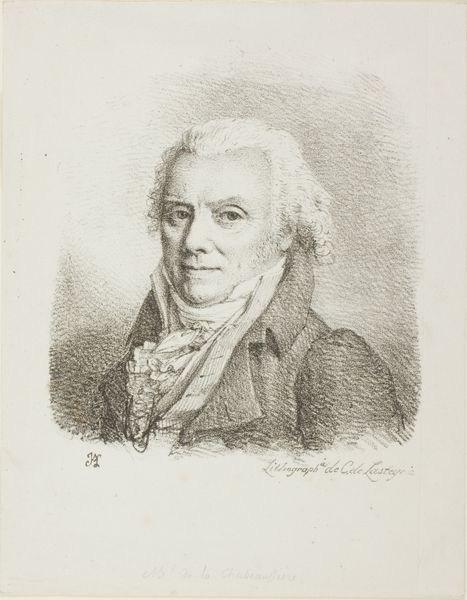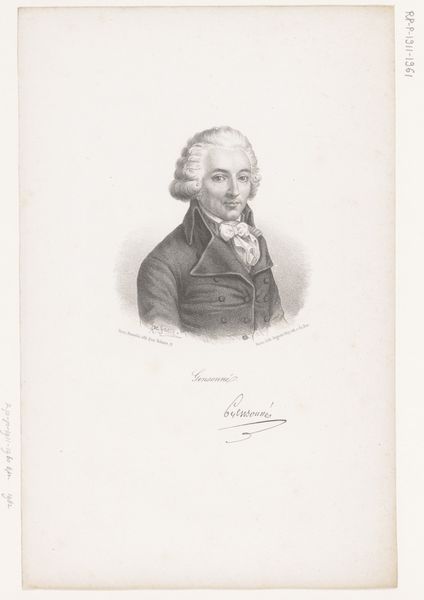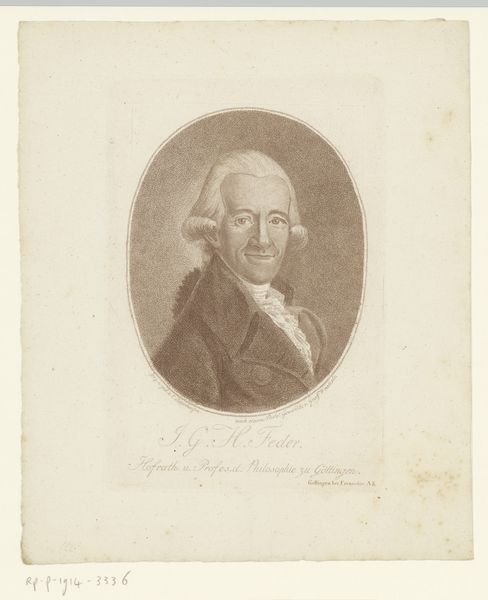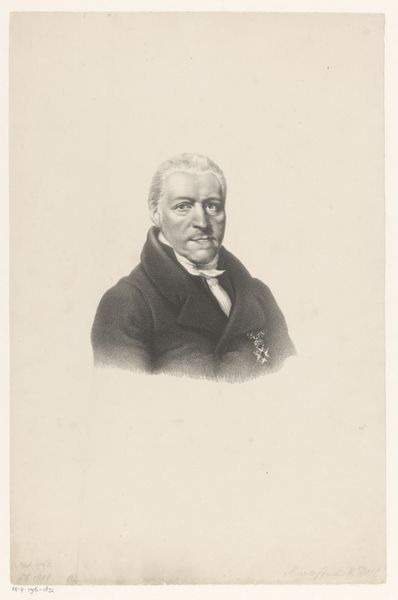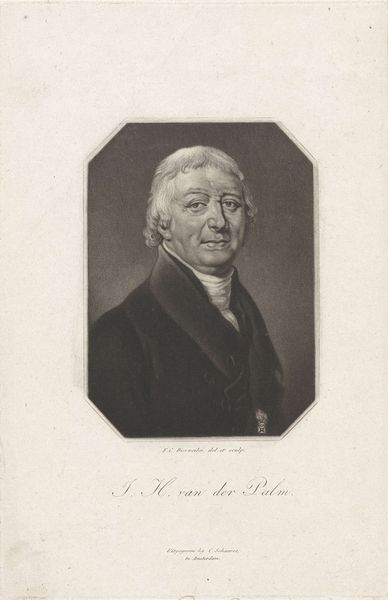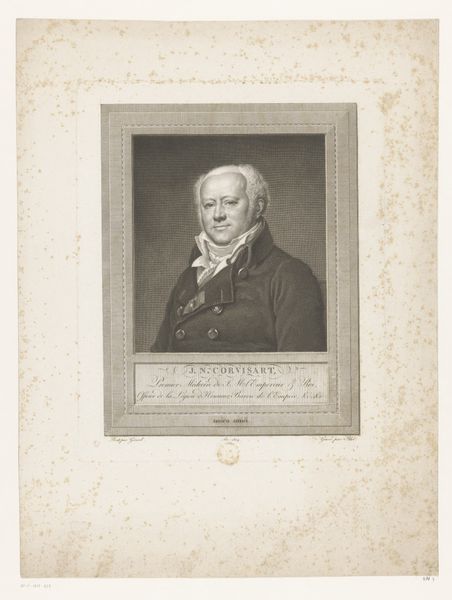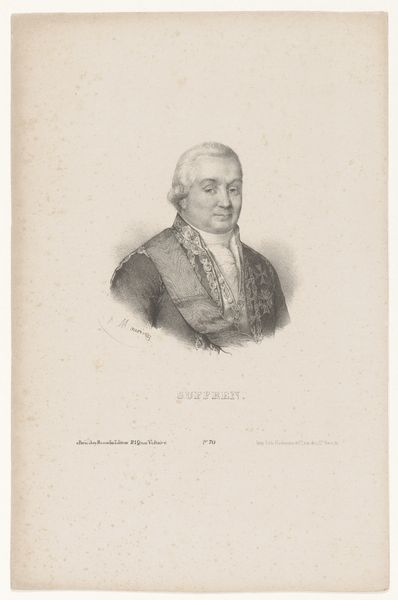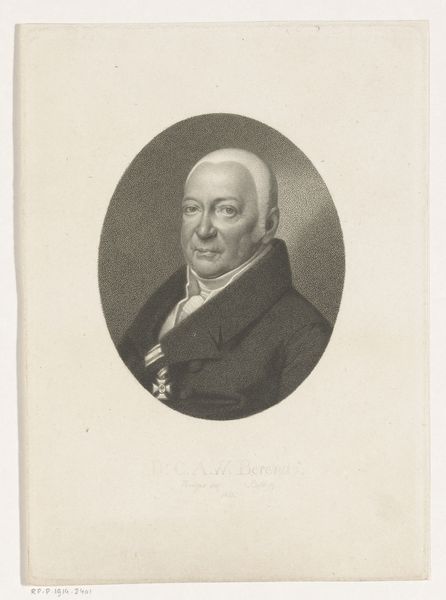
print, etching
#
portrait
#
neoclacissism
# print
#
etching
#
portrait drawing
Dimensions: height 359 mm, width 278 mm
Copyright: Rijks Museum: Open Domain
Editor: Here we have Julien-Léopold Boilly's 1821 etching, "Portret van de chirurg Pierre-François Percy." The detail achieved through etching is impressive. What jumps out to me is the way light and shadow are used to give Percy a very commanding presence. What do you see in this work? Curator: What I find compelling is how the printmaking process itself speaks to the democratizing impulse of the era. Etching, as a reproducible medium, allowed for wider dissemination of images of influential figures like Percy, the celebrated surgeon. Editor: So, instead of an oil painting only accessible to the elite, prints made his likeness available to a broader public? Curator: Precisely. Consider the material conditions: the engraver, the printing press, the distribution networks. These elements are crucial to understanding the portrait's function as a form of cultural production. How does the act of replication affect the perception of Percy’s status? Editor: I see. It’s not just about portraying Percy's importance, but about actively constructing and circulating that image within a larger social fabric. The choice of etching - the lines etched into the metal plate, the ink pressed onto paper – those are all conscious choices that contribute to how his authority is manufactured and consumed. Curator: Exactly. By examining the materiality and production of the print, we gain insight into the social and political context in which it was created and how it was received. Editor: This has given me a totally new perspective. I usually look at portraits as representations of individuals. You've helped me realize it’s more about the art object’s role within society. Curator: Indeed. Looking at art through the lens of its materials and mode of production can unveil fascinating stories about labor, consumption, and the construction of meaning.
Comments
No comments
Be the first to comment and join the conversation on the ultimate creative platform.

